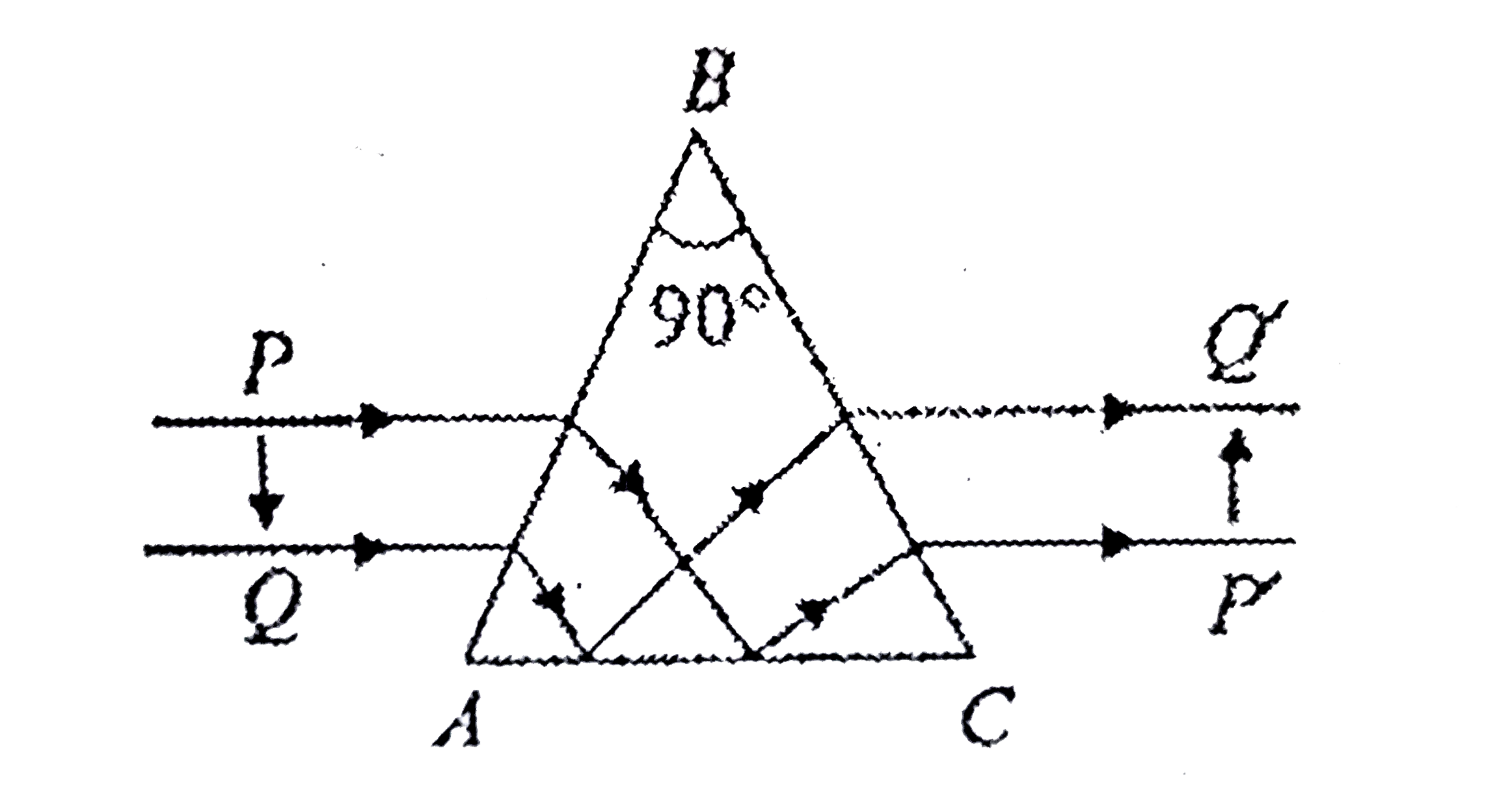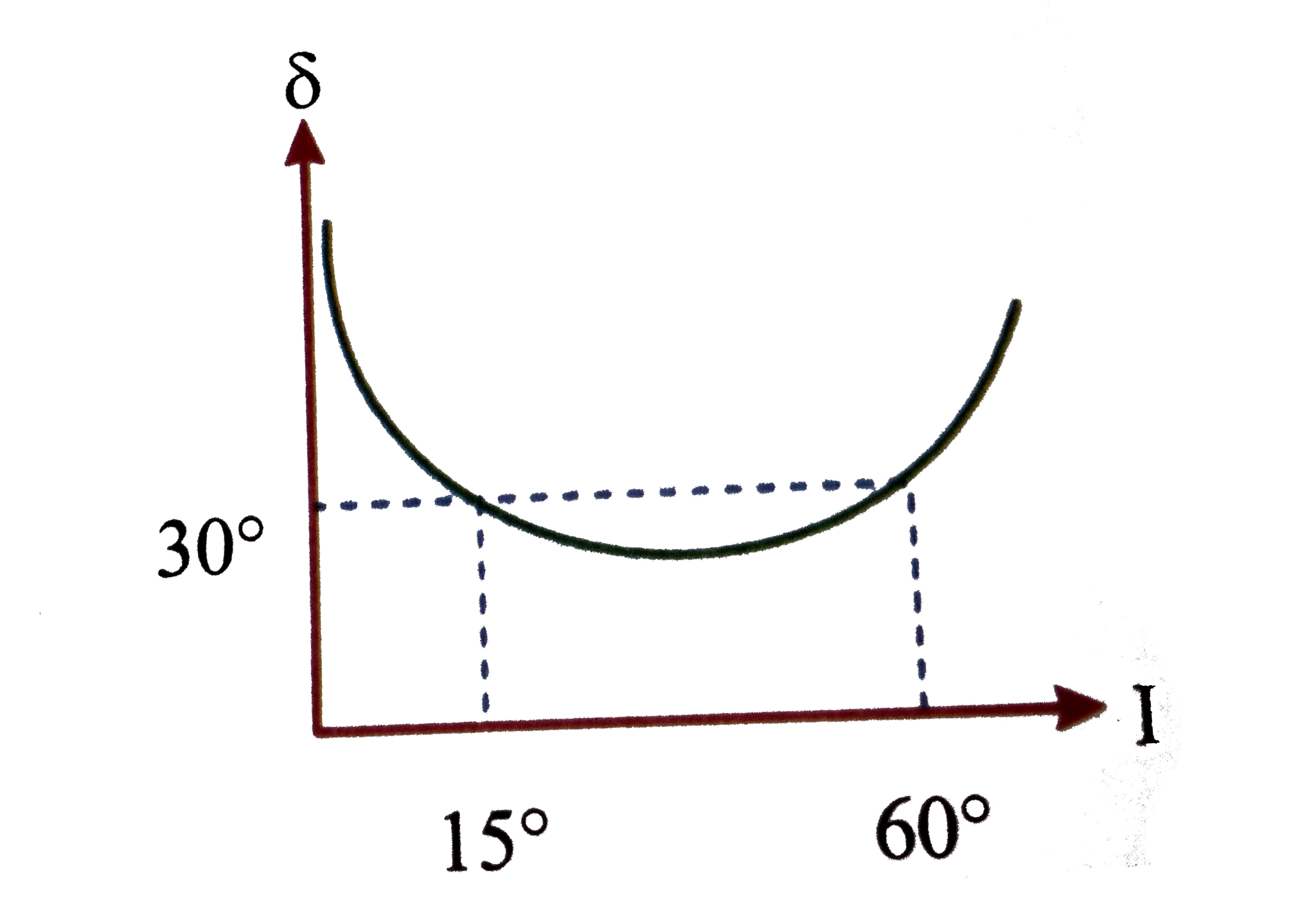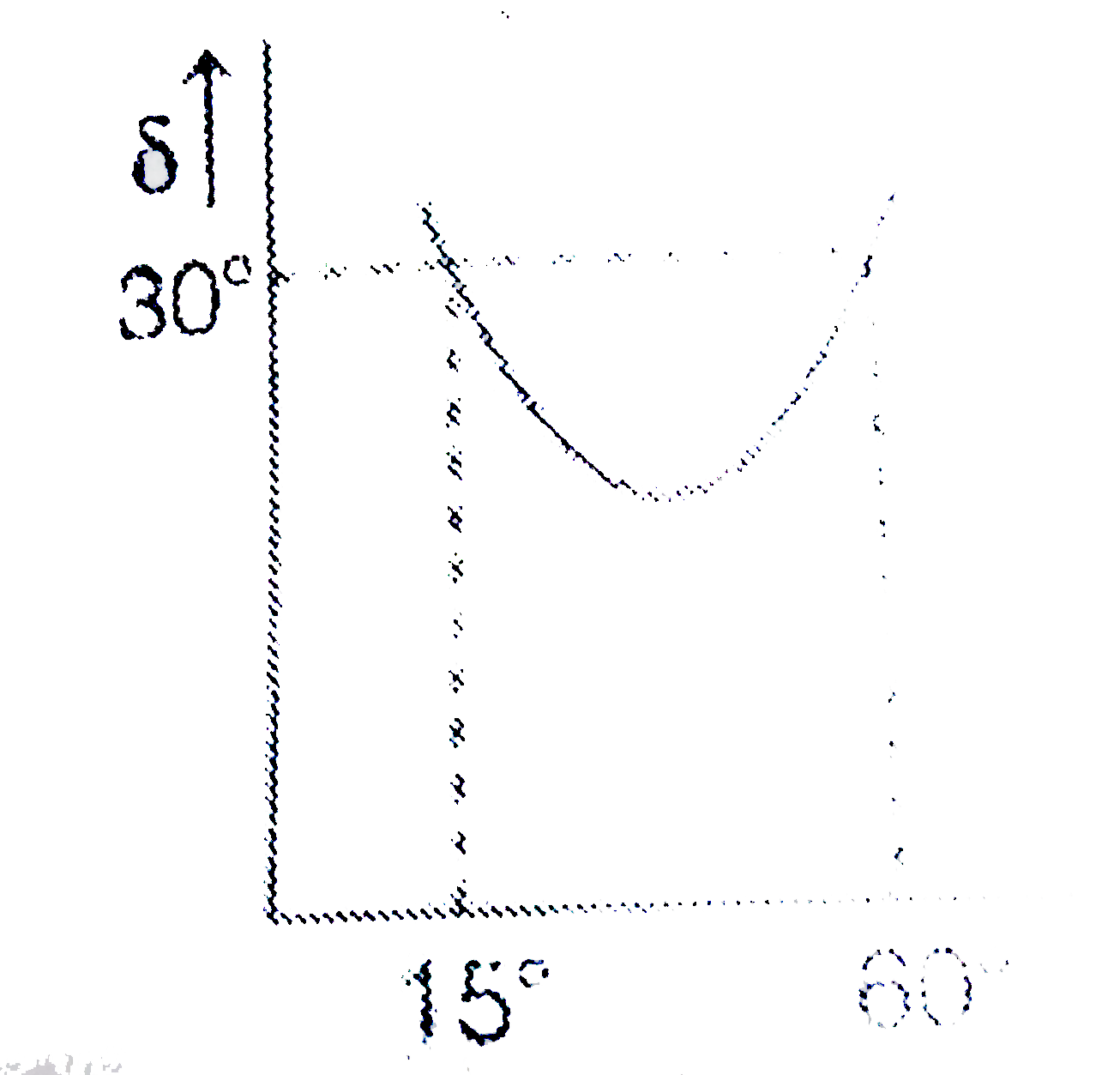Assertion : A total reflecting prism is used to erect the inverted image without deviation.
Reason : Rays of light incident parallel to base of prism emerge out as parallel rays.
If both assertion and reason are true and reason is the correct explanation of assertion
If both assertion and reason are true but reason is not the correct explanation of assertion
If assertion is true but reason is false
If both assertion and reason are false.
The correct Answer is:A

Beam of light incident on face AB, suffers refraction from air to glass and strikes the face AC suffering total intenal reflection. The beam now strikes the face BC of the prism at an angle of incidence less than the critical angle hence it suffers refraction from glass to air and bends away from the normal. The beam emerges out parallel to the base. As a result of refraction, on emergence the rays are inverted.
Topper's Solved these Questions
Similar Questions
Knowledge Check
- Question 1 - Select One
The path of a refracted ray of light in a prism is parallel to the base of the prism only when the
Alight of a particular wavelengthBray is incident normally at one faceCray under goes minimum deviationDnone of these - Question 2 - Select One
The path of a refracted ray of light in a prism is parallel to the base of the prism only when the
ALight is of a particular wavelengthBRay is incident normally at one faceCRay undergoes minimum deviationDPrism is made of a particular type of glass - Question 3 - Select One
The angle of a prism is 60∘ and its refractive index is √2 . The angle of minimum deviation suffered by a ray of light in passing through it is
AIf both assertion and reason are true and\ reason is a correct explanation of the assertionBIf both assertion and reason are true but the reason is not a correct explanation of assertion.CIf assertion is true but reason is false.DIf assertion is false but reason is true
Assertion : If the angles of the base of the prism are equal, then in the position of minimum deviation, the refracted ray will pass parallel to the base of prism.
Reason : In the case of minimum deviation, the angle of incidence is equal to the angle of emergence.View SolutionAssertion : If the angles of the base of the prism are equal, then in the position of minimum deviation, the refracted ray will pass parallel to the base of prism.
Reason : In the case of minimum deviation, the angle of incidence is equal to the angle of emergence.View SolutionFigure shows the graph of angle of deviation ∂ versus angle of incidence i for a light ray striking a prism. The prism angle is
 View Solution
View SolutionFigure shows graph of deviation δ versus angle of incidence for a light ray striking a prism. Angle of prism is
 View Solution
View SolutionRead the paragraph and the figure carefully and answer the questions.

The figure shows a constant deviation prism ABCD. The incident ray is PQ and the emergent ray is ST. Although it is made up of one piece of glass, it is equivalent to two 30∘−60∘−90∘ prisms and one 45∘−45−90∘ prism. The angle θ1 is the angle of incidence on face AB. The path of the ray inside the prism is indicated in the figure.
For this prism, μ=2sinθ1
The total deviation of the incident ray when it emerges out of the prism isView Solution

